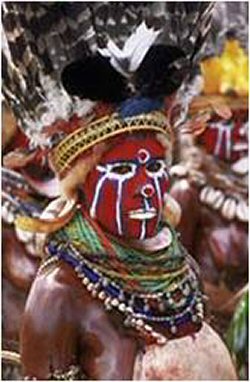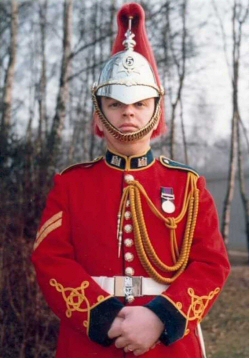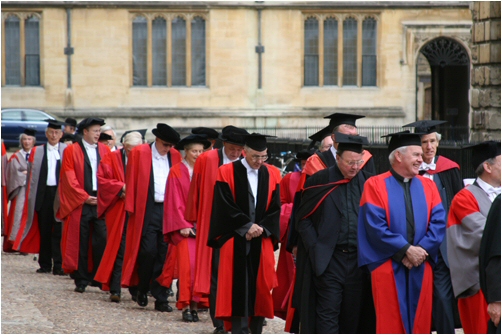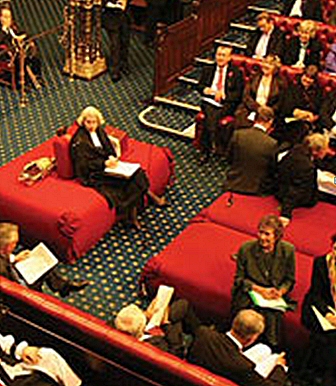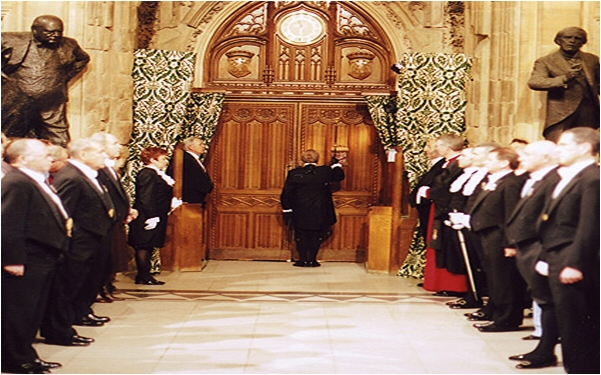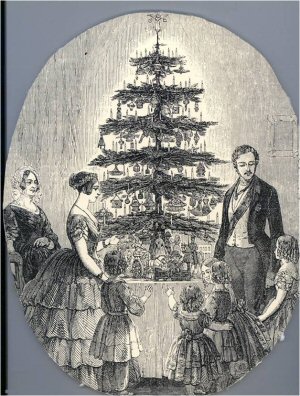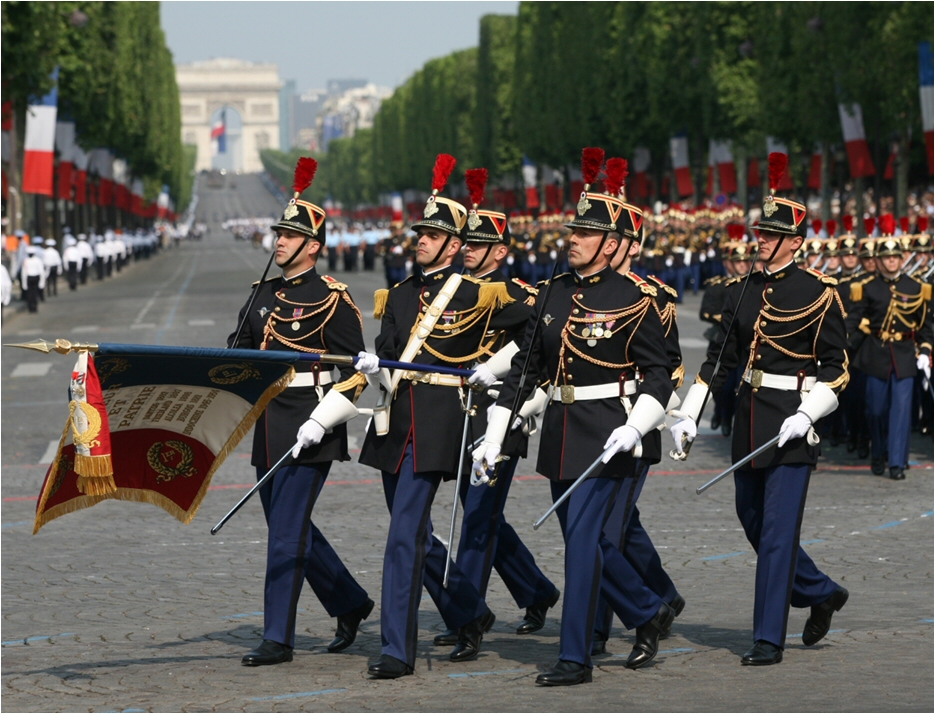THE TAG DEBATES
Several issues have been raised in the TAG debates of 9th June 2010 and 25th November 2010. These issues are being discussed in a number of TAG Subscriber Newsletters of which this is the second (the first was No.6).This one deals with the Traditionalist side of the argument and the contribution of Robert Adam at the debate of 9th June 2010.
Defining Tradition
Robert Adam
Tradition has had a bad press for the last two hundred years. It all started with the Enlightenment and to this day the idea survives that tradition is a brake on progress, runs contrary to the direction of history, is little more than uncreative copying, panders to the worst kind of nostalgia, and is a deceitful irrelevance that fools the public into thinking that there is an alternative to the full and truthful expression of the modern world. In all this, tradition and modernity have been set up as opposition to one another.
But traditions don’t seem to go away. People still have traditional weddings, graduates still wear gowns and buyers still prefer traditional houses. In my view, this is more than just an expression of taste and fashion. It goes much deeper and is something quite fundamental in the way we relate to society. If this is the case, then we need to understand what tradition is much better. This is what I will try and do now.
The first thing is always to look in the dictionary. Tradition is “the handing down of statements, beliefs, legends, customs, information, etc., from generation to generation.” For reasons I’ll explain, we also need to look at the word “custom”. This is not a synonym for tradition and means something different but people often use these words indiscriminately. Custom is defined as “a habitual practice; the usual way of acting in given circumstances” Custom, then, is something you just do habitually without giving it much thought.
The meaning is quite bare. We need to add flesh to the bones.
One convention for understanding things which are so familiar that they are hard to see dispassionately is to imagine how a ‘man from Mars’ would see them. In this case, I propose two ‘men from Mars’: prehistoric archaeologists and primatologists.
Prehistoric archaeologists, examining ancient findings before there was any history, and so any record of ideas, have to decide if something they have discovered is traditional or customary. Indeed, prior to genetic research, the fact that something distinctive is used over several generations was the only way to detect the existence and movement of cultures. So, the ‘beaker people’, a Stone Age to Bronze Age culture, is so called because it is identified with its traditional beaker-shaped pottery. The original indigenous American population that came over the Baring Straights is called the ‘Clovis Culture’ because of their distinctive stone spearheads named after the Mexican town where they were first discovered. So how can an archaeologist know that these things are traditional or customary?
In the first place, they have to be beyond simple function. So, if there was only one way to do something it could not be traditional or customary. So, if there are lots of ways you can make pots and people keep on making them one particular way and you keep on finding the same type of pot over a long period of time, it’s a pretty good guess that’s because they were made by the same population over several generations or a population influenced by the original population over several generations. Once you know this, how can you tell if this was done as a custom or tradition – if it was done just because it was done and no-one thought about it or if it was handed down as a deliberate and conscious act? Well, you can’t tell one way or the other without an historical record.
What does all this tell us?
First: There is something to do with tradition and custom that is beyond function. While pots might have something to do with a function, such as cooking, they are more than just the means of cooking and to be traditional they will have something decorative, ceremonial or symbolic about them.
Second: If you need a description to find out if something is a tradition, then traditions are something you will be aware of when you are being traditional. If customs are just done without thinking about them, then they will escape the historical record.
Third: If you can’t tell customs from traditions but they have the same characteristics then it’s likely that there’ll be a relationship between the two. As traditions are deliberate they could be customs that are brought to the attention of a population – possibly due to their imminent loss – and are then preserved consciously. Customs could also be traditions the origins of which have been forgotten and which have become habitual.
Turning to our other ‘men from Mars’, one of the hot subjects in primatology is the question of animal culture – do animals have anything similar to human culture? And the best way to examine this is in the study of our closest animal relatives, primates such as gorillas, chimpanzees, and orang outangs. This is culture not as ‘being cultured’ – going to the opera or reading Salman Rushdie – this is anthropological culture – the combination of actions and ideas that go together to make one group of people distinctive from another (or group of animals in this case).
Like prehistoric ancestors, you can’t speak to chimpanzees but you can observe them in action. So, using only observation, how do you discover if there is anything like culture in chimpanzee troupes? Primatologists look for learnt information that is passed down through the generations and used exclusively by one chimpanzee troupe. While a number of animals have observational learning – that is learning by observing others or being placed by a parent in a situation to make that learning likely to happen – it is quite possible that chimpanzees have a culture based on deliberate teaching by one generation to another both from parent to child and across the group. But they live a long time and the observation is not yet complete and the jury is out on whether they have a culture that can be compared with humans. But, for our purposes today, the important point is that the key definition of culture, as the distinctive identity of a group, has been whittled down to the existence of tradition – or more properly in this case, custom. Arguing this in reverse, our conclusion can be that culture is created by customs and traditions.
If we combine our ‘men from Mars’ and look at how we got to be humans in the first place, then this might tell us something more about just how fundamental customs and traditions might be. I’d like to turn to the work of the evolutionary behaviourologists Robert Boyd and Peter Richerson. They have developed a theory called ‘dual inheritance’ which is based on the principle that, in evolution, humans have the benefit of two processes – genetic and cultural. We share genetic evolution with all other creatures but we have a unique (or virtually unique) process of cultural evolution. I will let them explain directly what this means. “The ability to accumulate socially learned behaviour over many generations has allowed humans to develop subtle, powerful technologies and to assemble complex institutions that permit us to live in larger, and more complex, societies than any other mammal species. These accumulated cultural traditions allow us to exploit a far wider range of habitats than any other animal, so that even with only hunting and gathering technology, humans became the most widespread mammal on earth.”
The principle of this theory is quite simple. Other animals depend on genetic inheritance and trial and error or learning by observing to exploit their environment. Genetic inheritance may be highly effective but it is random and very slow indeed. The ability to learn from your environment is a major advantage and many creatures from crows to monkeys can do this, but they can only do it one at a time. They can’t accumulate the information and progressively add to it, except painfully slowly by natural selection. Humans, on the other hand, have the ability to learn individually by trial and error or personal observation and, with that knowledge, to pass it on not just to their offspring but to the offspring of their offspring and to their associates and their offspring and so on. This allows knowledge to accumulate and improve generation by generation and cuts down the effort of learning - something other creatures can’t do. This is called Cultural Transmission. It’s a similar process to genetic evolution in that it involves trial and error and survival of the fittest but it’s both much faster and less random.
Cultural Transmission gives a rather different picture of tradition than we got from our first ‘man from Mars’ – that tradition was beyond function and was something decorative, ceremonial, symbolic. To understand how these two different interpretations relate to one another, we have to go back to evolutionary theory.
Evolution has one overriding characteristic and one that’s often forgotten: it has no end purpose, it just happens. If something works it survives, if it doesn’t it doesn’t but – and this is the important point – if it neither works nor doesn’t but co-exists with something that does, it will also survive. This in turn gives us two secondary characteristics of evolution: inertia and redundancy. Change happens at random or due to failure and so if there’s no reason to change, things just stay the same – this creates inertia. If things have no functional purpose but do no harm, then they just hang around doing nothing much, they’re redundant. So with inertia and redundancy all things are not necessarily functional and so different lines of descent can create quite different conditions that can become quite permanent.
Now, essential to the process of Cultural Transmission, is the existence of large enough groups to ensure that traditions are passed down without the constant threat of extinction that occurs with isolated families and with enough people and enough generations for the accumulation of experience to deliver the maximum benefits. Over long periods, with inertia and redundancy, even in identical environmental conditions, Cultural Transmission will result in the development of quite varied social structures, language and technological advances. Simply put, human groups or tribes will be quite different from one another and this will be obvious to the members of group. The group bonding this creates is in itself an evolutionary benefit, not only when groups compete for resources with other groups but to survive collectively in harsh conditions.
So it may be that the differences created by inertia and redundancy in Cultural Transmission have themselves developed a function: that is to create cultural differences between groups that create a social bond that helps the group to survive.
To this idea we can add another characteristic of evolution, wasteful display or runaway mutation – let’s call it the story of the peacocks’ tail. The story goes like this: the original peahens chose the best original - and rather plain - peacocks on the basis that a good tail meant a healthy peacock; so the next generation of peacocks all had better tails; so the next generation of peahens had to chose the best tail from a better collection of tails; and so the story goes on until peacocks have huge tails – not much use for flying or getting away but great for attracting peahens. When group identity is itself a benefit, then better group identity is always better and the ratcheting up of wasteful display can occur both with group-to-group rivalry and for individual status between members of the group. Cultural traditions are part of the way a group identifies itself and, knowing that, the group can really make the most of them. Winding up traditions can be a good way of keeping everyone on side.
So it seems that there are two types of tradition: one where knowledge is simply built up from generation to generation and one which holds communities together. The two types don’t have to be different. It’s possible make the display of the accumulation of knowledge part of community identity – professional titles identify a community of knowledge. But they can be quite different. The accumulation of knowledge is part of the everyday traditions of scientific groups, professions and trades, while, on the other hand, military traditions are simple exercises in group bonding to encourage strangers to die for one another.
One way or another, I hope it’s now completely obvious that traditions are an essential part of what it is to be human. They are one of the key attributes that have allowed humans to take over the world and the way of holding groups of humans together so that they can take over the world. Now we need to look more closely at how communities use traditions to maintain their identity.
Traditions are something that comes from your ancestors or predecessors. They’re part of your past. They’re a kind of memory of where you have come from and what you are. Anyone who knows someone who has suffered from Alzheimer’s disease will understand that your memory is what you are. It’s the collection of all the things that have shaped your personality. It’s a record of all the things you’ve learnt. It’s your relationship with your family and friends. Without your memory your personality disappears. So it is with communities.
In 1925 a professor at the University of Strasbourg, Maurice Halbwachs, realised that groups had a memory like people. He saw that it was this memory that identified the group and members of the group took their identity from the memory they shared with other members of the group. Halbwachs called this Collective Memory.
Collective or social memory is now a sociological discipline. It is defined as a way of representing the past that is shared by a group and which the group acts out together. The identity of the group is based on its collective memory and this guides the way it behaves now and the way it sees the future. Collective Memory is the way a group identifies itself through its traditions.
The analogy with individual memory is revealing. We know that memory is selective, is at times inventive and is not a chronological record of what happened in the past. We can forget as well as remember and we can jump backwards and forwards and link different events with one another. We are constantly adding to our memories and each new experience goes into the pool of memories and changes it. Memory can adapt itself to different situations, drawing out what is relevant and leaving behind what is not. Above all, selective or adaptive, unless we suffer from amnesia, memory is cumulative and continuous. It is like an incomplete story, each chapter is part of a developing narrative, new chapters are constantly added but they make no sense unless they are part of the narrative.
As it is with individual memory, so it is with Collective Memory. The Jewish community is determined to remember the holocaust; Russia wants to forget its Stalinist excesses. We can keep Black Rod and the woolsack as part of a modern parliament. We can add Santa Claus and crackers to the traditional Christmas. All these things are Collective Memories, all are traditions and all are part of the way a community identifies itself. Even when people have tried to overturn society by rubbing out traditions, they make new ones - the first revolutionary French constitution stipulated the creation of new commemorative ceremonies. And however savage the attempts to remove them, they often lie below the surface waiting for the right moment to come up again – ethnic memories were quick to re-surface when Yugoslavia disintegrated
We need traditions and memories to tell us where we belong and who we are. To ignore them or deny them can be dangerous. Most dangerous of all is the idea that being rational puts you beyond tradition. This can lead to believe that, because you are rational, other people’s traditions are irrational and worthless and so it’s rational and even morally righteous to rub them out.
I will conclude by offering a definition of tradition.
- Tradition is an essential part of what it is to be human, both as a personal inheritance and as a part of a community.
- Tradition conserves the accumulated experience of a group or community. It gives identity to the group and the identity of the group to all the individuals in it.
- Tradition as group identity must be clear and understandable to all members of a group which relies on those traditions to give it identity. This means that it will often be expressed in display, decoration, ceremony or symbol.
- Tradition is memory and memory is not history. History is literal, sequential and accurate. Collective Memory is selective, adaptive and eclectic.
© Robert Adam, June 2010











